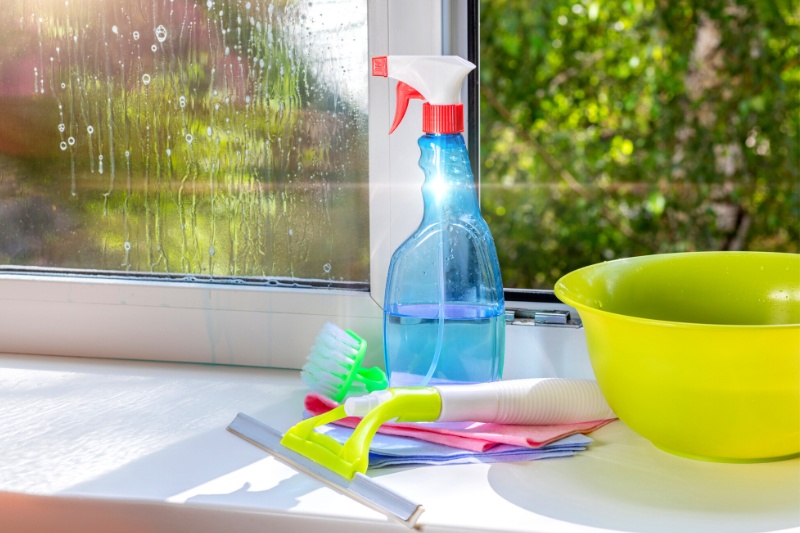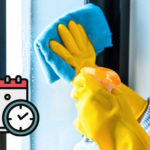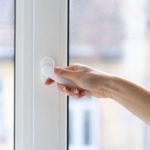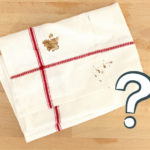Having clean, streak-free windows is a subtle way of making your home seem bright and polished.
Of course, everyone can clean a window, but getting that professional finish can take much work. And with so many different cleaners on the market, how are you meant to know what to wash windows with for the best results?
In this article, we go over the best options for cleaning your windows.
Read on for six tried-and-tested cleaning solutions, an easy-to-follow instruction guide on cleaning windows, and some top tips for achieving that streak-free finish.
What’s the Best Thing to Clean Your Windows With?
Plenty of window cleaners can remove dirt and grime from your windows, but some are more effective than others. Below you will find our recommendations for the best cleaning options out there.
Remember that even the best cleaner won’t give you your desired result unless you use the proper tools and cleaning techniques.
Once you’ve chosen a cleaner, check out our window washing guide for the best results.
1. A wet cloth
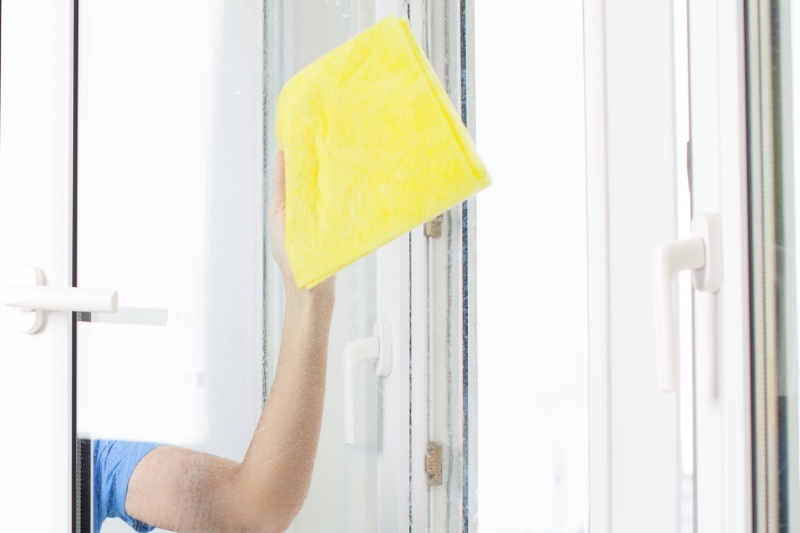
Sometimes, windows need a little freshening up to look their best, even with no dirt on them.
In these cases, we suggest merely using a wet cloth to give you that fresh, clean feeling.
To do so, wet a microfibre cloth and wipe it over the window to dampen the glass.
You can then use another microfibre cloth to wipe off the excess liquid and leave you with sparkling clean windows.
2. Washing-up liquid
If your windows have got to the point where they’re looking a bit grubby, you will need more than water to make them look like new.
One option that nearly everyone has in their home is washing-up liquid. As this is designed to cut through the grease and grime on your dishes, it also does an excellent job of doing the same thing on your windows!
To make a soapy solution, mix one tablespoon of washing-up liquid into some warm water.
When making your solution, make sure you don’t make it too bubbly. The excess soap won’t make your windows any cleaner, but it may leave filmy streaks on the glass once your windows dry.
3. White vinegar
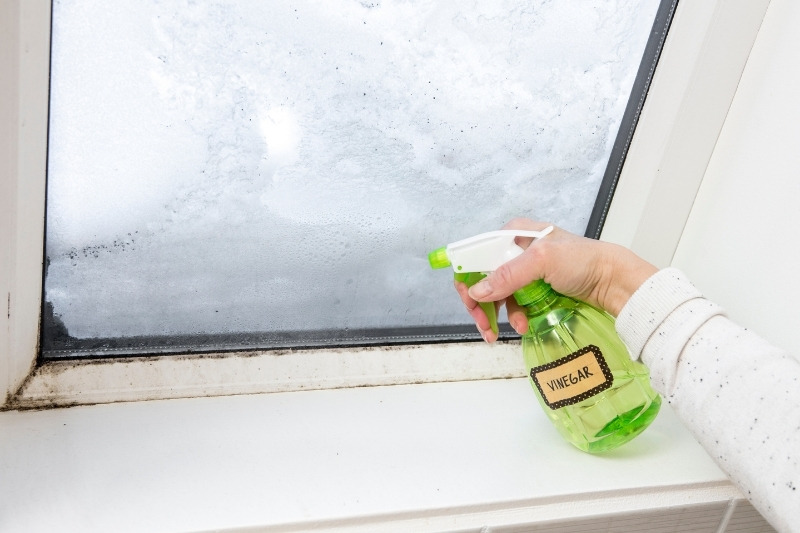
Another natural window cleaner is white vinegar. This is amazing at cleaning items all over the home as it has a slightly acidic nature, is non-toxic, and is antibacterial.
The only time you can’t use white vinegar on your windows is when the glass is matt-painted, or you have undercoated-only frames. In these cases, avoid using vinegar, as the acid will damage your windows.
To use, add two tablespoons of vinegar to a small bucket of warm water and mix it well.
You can apply this cleaning solution to the windows using a sponge or pour the solution into a spray bottle and spritz the glass as you clean.
4. Lemon Juice
Next up, we have lemon juice. This liquid is also acidic and mildly abrasive, making it an excellent option for cleaning windows.
The most effective way of cleaning with lemon juice is to cut a lemon in half, remove the pips, and rub the lemon directly onto the window panes.
However, this can become very time-consuming for larger windows, so feel free to mix the fresh lemon juice with a bit of water and spray it on your windows instead.
5. Rubbing alcohol
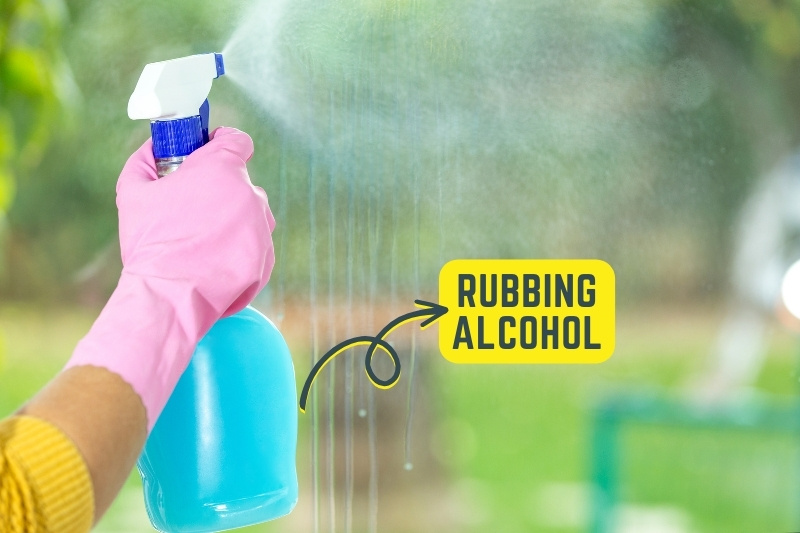
When you don’t have access to washing-up liquid, white vinegar, or lemon juice, another common household item you can use to clean windows is rubbing alcohol.
This will easily cut through any stubborn dirt and grime while disinfecting your windows at the same time.
To make a cleaner, combine two tablespoons of rubbing alcohol with 500 ml water. This can then be wiped or sprayed on your windows like any other cleaning solution.
If you use this option, we suggest wearing gloves while using the cleaner, as prolonged exposure can irritate your skin.
6. Store-bought cleaner
As always, you can choose a store-bought cleaner over any of our natural alternatives. These cleaners are often more expensive than the above options, but they are specifically designed to clean your windows, so they generally give good results.
One cleaner that we’ve found nearly always gets good reviews is the HG Window Cleaner. Each cleaning solution will have instructions on the label, but for this one, you need to add 15 ml of the cleaner to 5 litres of lukewarm water for the best results.
How Do You Clean Windows Like a Pro?
Choosing a great cleaner from the list above is all well and good, but you will only achieve a streak-free finish if you use the correct tools and techniques.
Below is a quick guide to cleaning your windows. For a more in-depth version, see our complete guide to cleaning windows.
These instructions can also be used to clean outside windows, but you may need additional tools if they’re hard to reach.
1. Remove dust and cobwebs
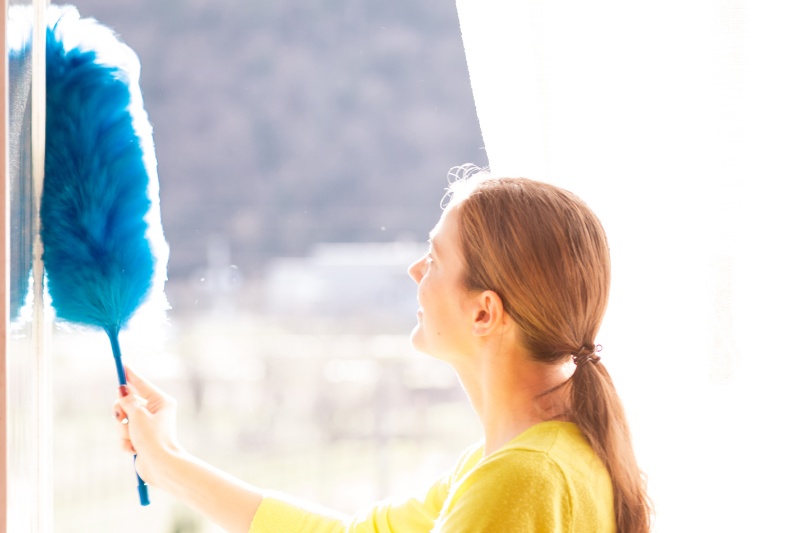
The first step in cleaning windows is removing dust and cobwebs from the window frame and panes.
You can do this using a vacuum cleaner or duster. We suggest doing your blinds at the same time to kill two birds with one stone.
You may be tempted to skip this step and go straight to your cleaner, but we advise against it.
Adding a liquid to the windows before removing the dust and grime will make removing the dirt harder and leave your windows with noticeable dirt streaks.
2. Wipe down the window frames
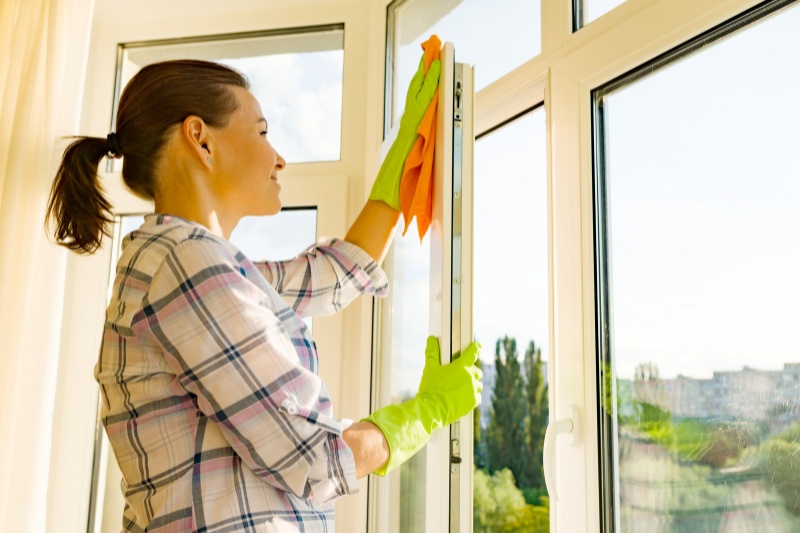
Next, you want to start wiping down your window frames. A wet sponge will usually be enough to remove any dirt, but you can use soapy water if the marks are more stubborn.
The reason for starting with the window frames is to prevent dirty water from dripping onto your clean windows.
Always start at the top of your window and move down so that the dirt doesn’t drip onto clean areas of the frame as well.
3. Clean the glass panes
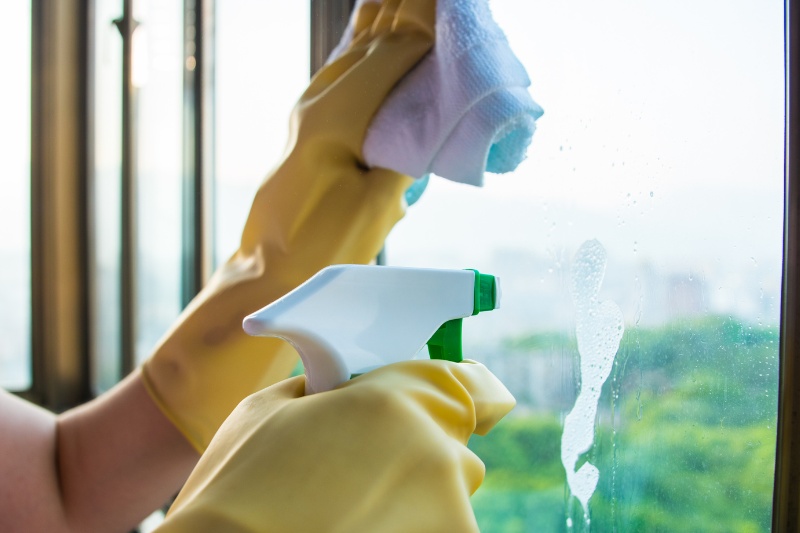
Now it is time to use your chosen cleaner to wipe any build-up from the window panes.
As with the frames, always start at the top of the glass and work your way down to avoid getting dirt on an area you’ve already cleaned.
Depending on your chosen cleaner, you will need to spray or wipe the solution onto the glass. Then use a microfibre cloth to wipe any traces of dirt and grime off the window.
4. Squeegee the glass panes
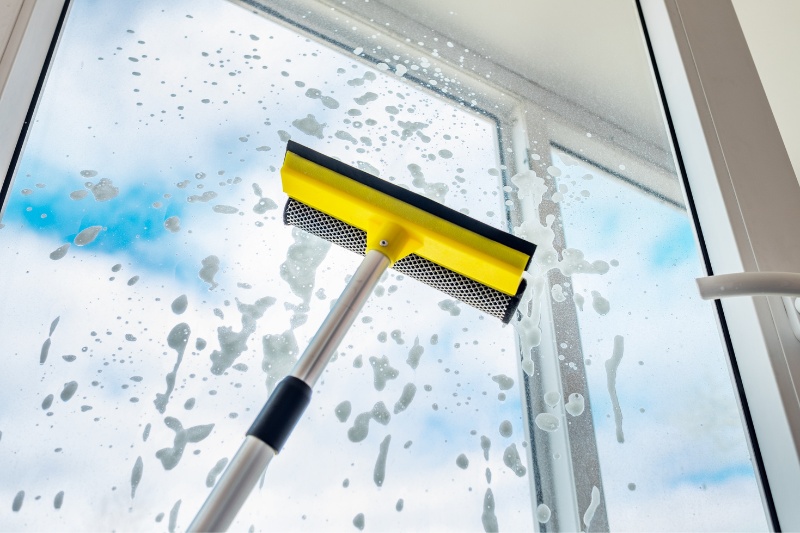
Once all the dirt has been scrubbed off the glass, you must remove the remaining cleaner from the window. The best way to do this is by using a squeegee.
Move the squeegee along the window in horizontal strokes, making sure to overlap each stroke with the previous one.
Try to angle your blade slightly after the first stroke to push the dirty water down the window, and make sure you wipe the edge between each stroke to avoid spreading dirt.
If you don’t own a squeegee, you can also use newspaper to wipe the window down. Scrunch a few sheets of newspaper up, and rub the windows in a circular motion.
5. Remove excess cleaner
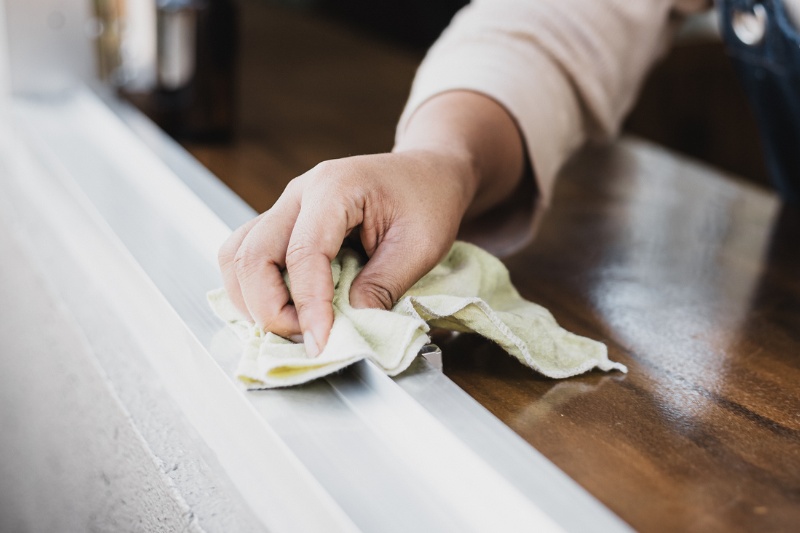
The final step in cleaning your windows is to remove any excess cleaner that the squeegee or newspaper couldn’t get.
You can do this by wiping the edges of the window using a dry microfibre cloth.
It is also a good idea to buff the window at this point to remove any streaks. Simply wipe the glass in a circular motion until it is fully transparent.
Top Tips for Cleaning Windows
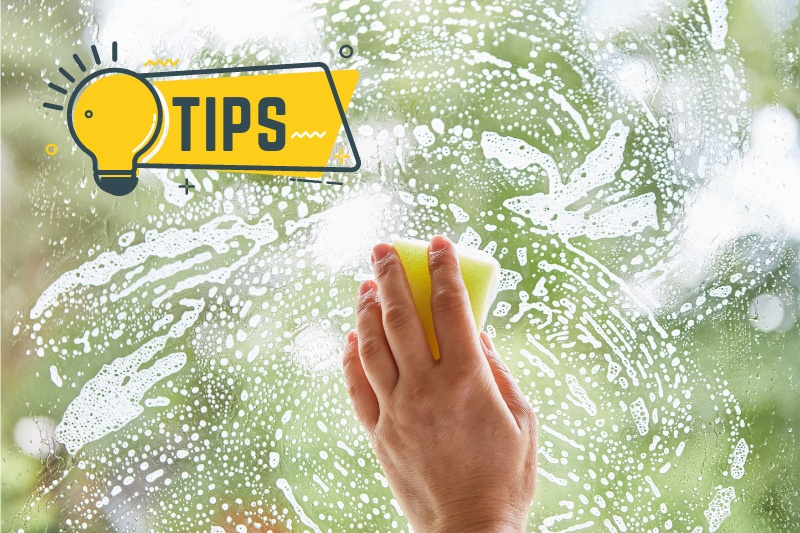
Cleaning windows so that they are entirely streak-free can be a challenging task. To make this easier, try out some of our top tips below:
- Clean windows on a cloudy day: If possible, wait for a cloudy day to clean your windows. The sun will cause your cleaner to dry on the window more quickly, increasing the chances of streaks.
- Use distilled water: Tap water often contains minerals that will remain on your windows after cleaning and leave streaks. Distilled water doesn’t contain these minerals, therefore eliminating this problem.
- Remove curtains and blinds: This isn’t necessary when cleaning windows, but removing your curtains and blinds will give you more space to clean and prevent dirty water splashes from landing on them.
- Only use a squeegee on large windows: Squeegees often leave drips at the bottom of a window. These are easy to catch on large windows but will leave a mess for smaller ones.
- Use plenty of cleaning solution: Lots of cleaning solution is needed to remove dirt from windows effectively, so apply your chosen solution liberally. Too little, and you will find yourself with dirty streaks.
- Invest in a window vac: Window vacs are great for homes with lots of big windows as they can speed up the cleaning process. We recommend the Kärcher Window Vac, which can be used with various cleaners.

Hannah has a passion for cleaning. She worked her way around Australia by cleaning hostels in exchange for free accommodation and used her cleaning skills to bag a job as a chalet host for a luxury ski company in France.
